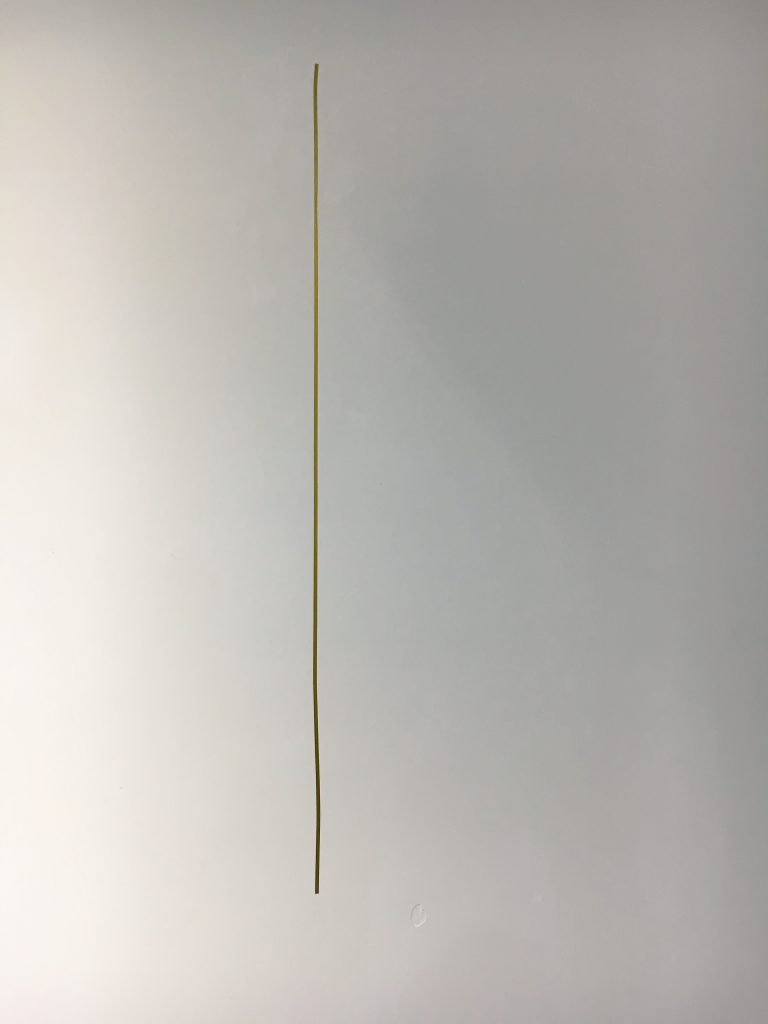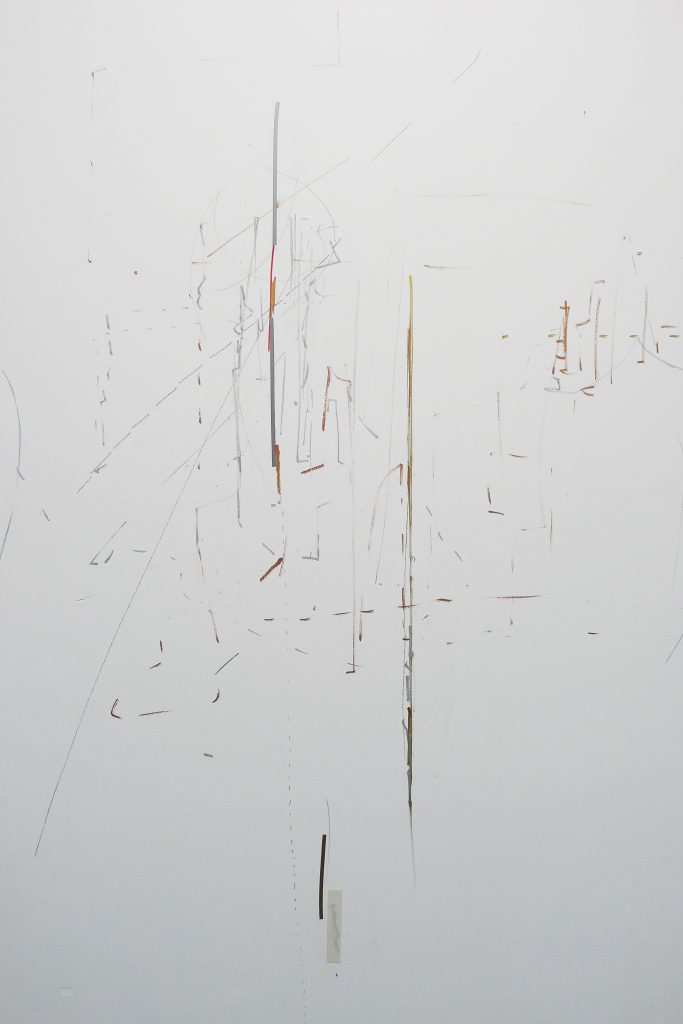
Photo © Rhythm Section
We are proud to announce that Veronika Wenger has been awarded by ArsVersa Kunst-Stiftung for a grant Kunstförderung 2020 for the producing and publishing her new catalogue.

drawing, film, painting

We are proud to announce that Veronika Wenger has been awarded by ArsVersa Kunst-Stiftung for a grant Kunstförderung 2020 for the producing and publishing her new catalogue.


Historically, drawing was not an autonomous medium. Nobody gave much thought as to whether a drawing was abstract or non-abstract, it merely existed to design something or to find a sign for something. Drawing was used for sketching, studying, or preparing a painting.
For me, the most important aspect of drawing is the difference between the line and the drawing itself. The line is able to visualise movement in space, for instance, dancing, writing or speaking. A line can represent a word, a leaf that flies, a passer-by, an accidental or conscious movement. The recorded movement maps a form onto the surface. A line segment from point A to point B.
A–––––––––––––––B
I have to draw a line to mark the line segment. I have to draw a line to visualise movement. Writing therefore, is a good example. Writing visualises speech through a line. It also shows a movement; from left to right, top to bottom, or right to left. Then, is speech movement? It at least has a direction and duration, which is shown linearly by writing or by the recording of a waveform.
Why do I draw? Why do I need to visualise something? It is not to get something off one’s mind, or to remember something, because sometimes I try to erase traces to disperse anything that has left too many marks.
Spoken language is always changing, so it can only be defined temporarily. The written language, however, remains a sign which does not loose validity over time. Its meaning remains, both as a sign and as a registered movement.
The drawing represents the visible and uncovers imagination, ideas, reflections and intuitions. Drawing can come in many forms; it can be documentation, information or art. But it is always communication.
The rhythm of the movement over time has to be in the line, by itself. Finding the right rhythm, composition, or the right movement, is to draw a distinction between abstraction and non-abstraction. In the end the difference is that if I draw a dancer, the movement of a dancer, this is in a way abstract because there is content, but the spectator can also appreciate the way in which I drew the dancer.

But if the movement is only shown by the line, the distinction is shown by the line, then the rhythm is the line– the drawing shown by the pure line. In this case the line is not an abstract line. It is a line. This line forms the drawing, and now the spectator has to deal with it as if it were a part of a language (in the sense that it is the base of the form) in the same way you make sense out of a string of letters. Speech, for example, is not abstract. The sound is a part of reality, as is the letter. It is real, only the meaning, the imagination, and the sensation the letter represents is in a way abstract.

A line on a surface marks a border or a sign on the unmarked or marked space. So the line visualises the negative space and becomes a form. The line is the unmarked space of the drawing or writing.
What is abstraction?

The dancer – the drawing is an abstraction of nature in a composition of drawing or writing. But the line on the surface is not an abstraction – it is a line – especially a line marked by tape is no abstraction. It is a line, it is (a piece of) reality.

It is a line, it is (a piece of) reality. You have to think about what a line is in your imagination, in your mind or in reality.

A line on a surface can be conscious or unconscious, it can mark something or trace something. This is what I like when I am walking around, finding a composition on a wall or a floor created by accident, made by ‘real life’, the imprint of the world.
To draw or work with the line as an artist seems easy, but the truth is that it is very difficult to find the right line.
An abstract drawing means to find a balance between making ‘the invisible visible and the visible visible’ influenced by the history of drawing.
———————-
Veronika Wenger, Guangzhou, March, 2019
Many thanks for assistance in the translation to Michael Wright and Simon Eastwood
A lecture in the context of an international symposium at the Guangzhou Art Academy on the topic THE PAST AND THE FUTURE OF ABSTRACT ART












The exhibition De Stijl and the Future presents the Artworks of several Artists from China, Germany, the Netherlands and Great Britain the Exhibition explores the relationships between the movement and the work of the participating artists who are influenced by the ideas of De Stijl. The show started already in January at the United Art Museum in Wuhan (China) and will now continue in a new order at the OCT Boxes Art Museum Foshan City (China). With the exhibition we started a new series of exhibitions which, from the basic concept, guarantees an exchange between the arts, the creatives, curators and the artists themselves. Based on these considerations, we decided to invite the artists to present their own statement about art and its relationship with De Stijl. And to allow this within our exhibition, but not to integrate directly, but at a certain distance. These works are not integrated into the exhibition as direct curatorial positions, but certainly in the experience process of the exhibition conception and theme. The second show of De Stijl and the Future will open on March 22th at 10:30am.
开幕时间 / OPENING TIME
2019/03/22 10:30
展 览 时 间 / EXHIBITION TIME
2019/03/22 TO 2019/05/05
展 览 地 点 / EXHIBITION PLACE
BOXES ART MUSEUM
主 办 单 位 / ORGANIZER
合美术馆 华侨城盒子美术馆
UNITED ART MUSEUM, OCT BOXES ART MUSEUM
ARTISTS
LIANG CHEN
IEMKE VAN DIJK
HENRIËTTE VAN ‘T HOOG
GONGHONG HUANG
OLEKSIY KOVAL
PENG LI
SHUQING MA
XIAO TANG
XIAOMING WANG
VERONIKA WENGER
MICHAEL WRIGHT
CURATOR
SOPHIE-CHARLOTTE BOMBECK
PRODUCER
ZHOU LI
ACADEMIC HOST
LIU KE
OPENING HOURS: TUESDAY TO FRIDAY 10:00 – 18:00 | SATURDAY, SUNDAY 10:00 – 20:00 | BOXES ART MUSEUM, SHUN FENGSHAN PARK (SOUTH GATE), SHUNDE DISTRICT, FOSHAN, CHINA
THE EXHIBITION IS SUPPORTED BY
HIPP AND LUFTHANSA CARGO